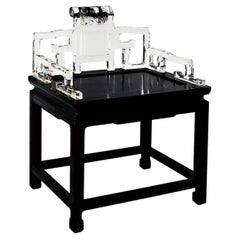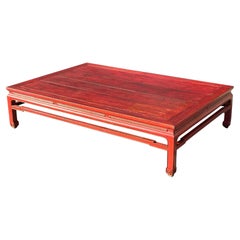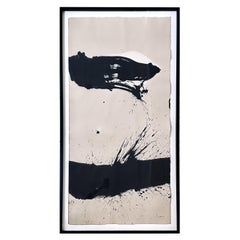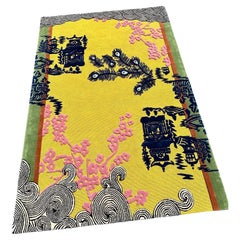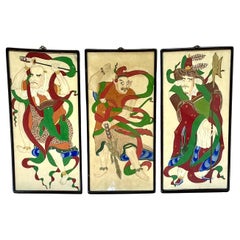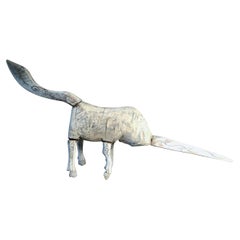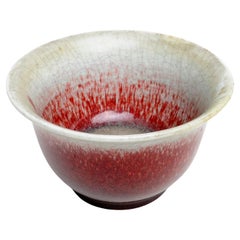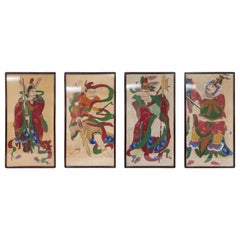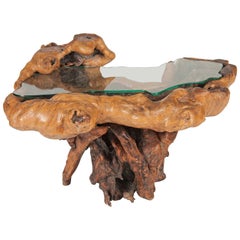Ancient Chinese Furniture
21st Century and Contemporary Armchairs
Crystal
Antique Early 19th Century Chinese Qing Coffee and Cocktail Tables
Wood
Early 2000s German Post-Modern Paintings and Screens
Paper
2010s Indonesian Anglo-Japanese Chinese and East Asian Rugs
Wool, Acrylic
Early 20th Century Chinese Chinese Export Paintings
Paper
Antique 15th Century and Earlier Chinese Antiquities
Wood
Early 20th Century Chinese Other Ceramics
Ceramic
20th Century Chinese Other Paintings and Screens
Fabric, Paint
Antique Early 17th Century Chinese Coffee and Cocktail Tables
Wood
Antique 15th Century and Earlier Chinese Antiquities
Wood
Antique 16th Century Chinese Sculptures and Carvings
Terracotta
Antique 18th Century Chinese Ming Side Tables
Elm
Antique Late 19th Century Chinese Table Mirrors
Brass
20th Century Chinese Chinese Export Paintings and Screens
Wood
Antique 15th Century and Earlier Chinese Han Sculptures and Carvings
Limestone
Antique 15th Century and Earlier Chinese Han Antiquities
Bronze
Antique 15th Century and Earlier Chinese Antiquities
Jade
Antique 15th Century and Earlier Chinese Antiquities
Jade
Antique 19th Century Sideboards
Cedar
Early 20th Century Chinese Metalwork
Silver
Antique 15th Century and Earlier Chinese Antiquities
Stone
Early 20th Century Chinese Chinese Export Ceramics
Porcelain
Early 20th Century Chinese Chinese Export Ceramics
Porcelain
Early 20th Century Chinese Chinese Export Ceramics
Porcelain
Antique 15th Century and Earlier Chinese Han Sculptures and Carvings
Limestone
Antique 15th Century and Earlier Chinese Han Sculptures and Carvings
Stone
Antique 19th Century Metalwork
Bronze
Antique 15th Century and Earlier Chinese Antiquities
Stone
Antique 19th Century Chinese Qing Sculptures and Carvings
Bamboo
Antique 15th Century and Earlier Chinese Ming Sculptures and Carvings
Limestone
Early 20th Century Chinese Chinese Export Jars
Porcelain
Antique 15th Century and Earlier Chinese Antiquities
Bronze
Early 20th Century Chinese Chinese Export Vases
Porcelain
Early 20th Century Chinese Chinese Export Ceramics
Porcelain
20th Century Chinese Qing Jars
Ceramic, Porcelain
Antique Early 1700s Japanese Japonisme Vases
Bronze
Antique 18th Century Chinese Qing Sculptures
Giltwood, Lacquer
Antique 15th Century and Earlier Chinese Archaistic Antiquities
Earthenware, Clay, Paint
Antique 15th Century and Earlier Chinese Archaistic Sculptures and Carvings
Earthenware, Pottery
21st Century and Contemporary Books
Paper
Antique 17th Century Prints
Paper
Antique Early 1900s Vases
Glass
Early 2000s Dining Room Sets
Fabric, Wood
20th Century Books
Paper
Early 2000s Dining Room Chairs
Fabric, Wood
Antique Early 1900s Chinese Antiquities
Wood
Antique Mid-19th Century Chinese Other Pillows and Throws
Cotton
Antique Late 19th Century Chinese Other Pillows and Throws
Cotton, Silk
Early 20th Century Chinese Figurative Sculptures
Stone
Antique Mid-19th Century Chinese Other Paintings and Screens
Paper
Antique Mid-19th Century Chinese Qing Screens and Room Dividers
Elm
Antique Early 19th Century Chinese Qing Sculptures and Carvings
Zitan
Antique Late 17th Century Chinese Qing Figurative Sculptures
Wood
Antique 15th Century and Earlier Chinese Han Antiquities
Bronze
Vintage 1960s Chinese Mid-Century Modern Sculptures and Carvings
Ceramic
Chinese Architectural Models
20th Century Chinese Chinoiserie Animal Sculptures
Marble
Antique 15th Century and Earlier Chinese Antiquities
Antique 15th Century and Earlier Chinese Tribal Urns
Ceramic
Antique 18th Century and Earlier Chinese Sculptures
- 1
Ancient Chinese Furniture For Sale on 1stDibs
How Much is a Ancient Chinese Furniture?
- 1stDibs ExpertApril 5, 2022In ancient China, pottery was primarily used for cooking, storing and serving food. Throughout the Han Dynasty, the art of pottery evolved to include ceramic figures, the best example of this being the TerraCotta Warriors who guard the tomb of Emperor Qin Shi Huang. Find a variety of antique Chinese pottery from many different eras on 1stDibs.
- 1stDibs ExpertJune 15, 2023To care for Chinese lacquered furniture, wipe it with a damp cloth regularly. You can use a paste wax intended for use on lacquer finishes to restore shine, but avoid using harsh furniture polishes and cleaners on pieces. On 1stDibs, shop a range of lacquered furniture.
- 1stDibs ExpertApril 5, 2022Chinese-style furniture is usually called Chinoiserie. The term indicates furniture and decorative objects produced in Europe and North America that borrow design elements from pieces made in China and other East Asian countries. On 1stDibs, find a collection of Chinoiserie.
 PAGODA REDOctober 7, 2020
PAGODA REDOctober 7, 2020To determine the age of a Chinese furniture piece, look carefully at the joinery and finish. Natural expansion and contraction of the wood over time will cause a joint to protrude or retract, distorting a once-seamless fit. Antique lacquer finishes become crackled and worn over time. Areas of exposed wood, such as the underside of a table, the footrest of a chair, or the back of a cabinet should appear raw and dry compared to the finished surface. With use, the legs of tables and chairs become weathered near the bottom from precipitation and use.
- 1stDibs ExpertNovember 4, 2024To identify antique Chinese furniture, look carefully at its details. Chinese craftsmen often built furniture using mortise and tenon joinery, eliminating the need for nails and screws. If you see this type of hardware, your piece is likely not at least 100 years old, especially if the hardware still looks new and shiny. Since antique furniture was handmade, you will normally see slight imperfections, such as tool marks or slight variations in carvings. Pieces that appear completely uniform and pristine are less often genuine antiques.
When present, maker's marks can also be helpful. Research the marks to learn more about when the maker was active and producing pieces like yours. Alternatively, you can have a certified appraiser or experienced antique dealer evaluate your furniture for you.
Shop an assortment of antique Chinese furniture.
